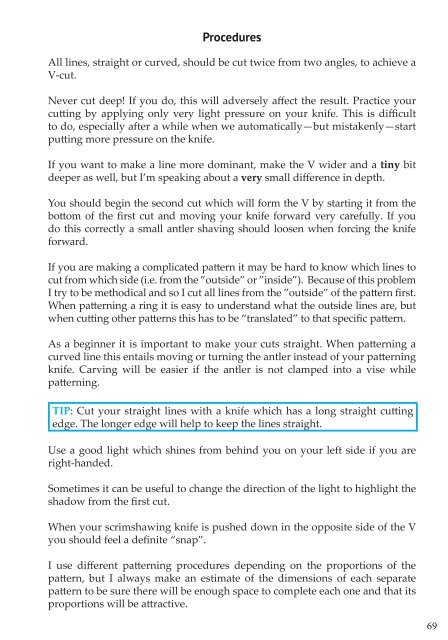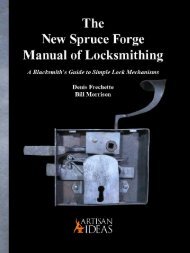Antle Knife: Making a Sami-Style Knife Handle and Sheath
This book’s detailed step-by-step instructions concern 1) selecting and preparing the material for the knife’s handle and sheath (e.g., the antler, the leather, the wood and the bark), then 2) using the material to build a classic and authentic antler knife the Scandinavian way. Most of the comprehensive and valuable instructions in this book, whose author lives in northern Sweden, concern the intricacies of working with antler, a subject in which the author has over 50 years of experience. The instructions will help you to avoid mistakes and to learn important procedures, tricks and tips so you can develop your own style. Although the author uses reindeer antler for this knife, he explains you could also use moose or caribou antler. The author says, “I hope this book will lower the reader’s learning threshold for working with antler, easing the knifemaker into this amazing hobby, and inspire readers to use their imagination and do something new”. Hardcover, 112 pages, 208 color photos and drawings, 10-in. x 7-in x .5-in.
This book’s detailed step-by-step instructions concern 1) selecting and preparing the material for the knife’s handle and sheath (e.g., the antler, the leather, the wood and the bark), then 2) using the material to build a classic and authentic antler knife the Scandinavian way. Most of the comprehensive and valuable instructions in this book, whose author lives in northern Sweden, concern the intricacies of working with antler, a subject in which the author has over 50 years of experience. The instructions will help you to avoid mistakes and to learn important procedures, tricks and tips so you can develop your own style.
Although the author uses reindeer antler for this knife, he explains you could also use moose or caribou antler.
The author says, “I hope this book will lower the reader’s learning threshold for working with antler, easing the knifemaker into this amazing hobby, and inspire readers to use their imagination and do something new”.
Hardcover, 112 pages, 208 color photos and drawings, 10-in. x 7-in x .5-in.
Create successful ePaper yourself
Turn your PDF publications into a flip-book with our unique Google optimized e-Paper software.
Procedures<br />
All lines, straight or curved, should be cut twice from two angles, to achieve a<br />
V-cut.<br />
Never cut deep! If you do, this will adversely affect the result. Practice your<br />
cutting by applying only very light pressure on your knife. This is difficult<br />
to do, especially after a while when we automatically—but mistakenly—start<br />
putting more pressure on the knife.<br />
If you want to make a line more dominant, make the V wider <strong>and</strong> a tiny bit<br />
deeper as well, but I’m speaking about a very small difference in depth.<br />
You should begin the second cut which will form the V by starting it from the<br />
bottom of the first cut <strong>and</strong> moving your knife forward very carefully. If you<br />
do this correctly a small antler shaving should loosen when forcing the knife<br />
forward.<br />
If you are making a complicated pattern it may be hard to know which lines to<br />
cut from which side (i.e. from the ”outside” or ”inside”). Because of this problem<br />
I try to be methodical <strong>and</strong> so I cut all lines from the ”outside” of the pattern first.<br />
When patterning a ring it is easy to underst<strong>and</strong> what the outside lines are, but<br />
when cutting other patterns this has to be “translated” to that specific pattern.<br />
As a beginner it is important to make your cuts straight. When patterning a<br />
curved line this entails moving or turning the antler instead of your patterning<br />
knife. Carving will be easier if the antler is not clamped into a vise while<br />
patterning.<br />
TIP: Cut your straight lines with a knife which has a long straight cutting<br />
edge. The longer edge will help to keep the lines straight.<br />
Use a good light which shines from behind you on your left side if you are<br />
right-h<strong>and</strong>ed.<br />
Sometimes it can be useful to change the direction of the light to highlight the<br />
shadow from the first cut.<br />
When your scrimshawing knife is pushed down in the opposite side of the V<br />
you should feel a definite “snap”.<br />
I use different patterning procedures depending on the proportions of the<br />
pattern, but I always make an estimate of the dimensions of each separate<br />
pattern to be sure there will be enough space to complete each one <strong>and</strong> that its<br />
proportions will be attractive.<br />
69










